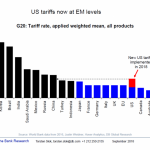Collectivism will always eventually destroy the economy of any nation, no matter how great it may be.
That’s a pretty powerful statement. Is it historically supportable? Let’s visit a current example – Venezuela, to examine the overall process of collectivism, then look at a few other historical cases and see what we can learn.
Venezuela – 17 Years of Collectivism
In1980, Venezuela was deemed to be the fourteenth most economically free country in the world. Today, it’s a veritable train wreck, having failed in every conceivable way. How did this happen? Was it just bad luck? No, quite the contrary.
Venezuela’s prosperity was fueled primarily by the export of oil. The downward spiral began in the 1980’s, as a result of a drop in the world oil price. Until that time, there had been strong public support for the free market, but diminished oil receipts resulted in a decline in living standards for most all Venezuelans, which left them open to claims by collectivist political candidates that the whole problem was the free market. In 1999, they elected Hugo Chávez, who promised to solve the problem through collectivism – the promise of a chicken in every pot.
Mister Chávez began to take from the “haves” and provide largesse for the “have-nots.” Not surprisingly, he was highly praised by the have-nots. So, he went further. He nationalized many of Venezuela’s industries. Industry became less and less profitable, so less and less money flowed through the system each year. Eventually, the revenue to government was insufficient to pay for the promised largesse. The leader then died and the new leader, Nicolás Maduro inherited a zombie economy. In desperation, he introduced capital controls and increased nationalization, and regulations, hoping to squeeze as much as possible from the economy before it went off the cliff. The result was a fully dysfunctional economy, replete with massive job losses, increasing shortages and, finally, starvation.













Leave A Comment